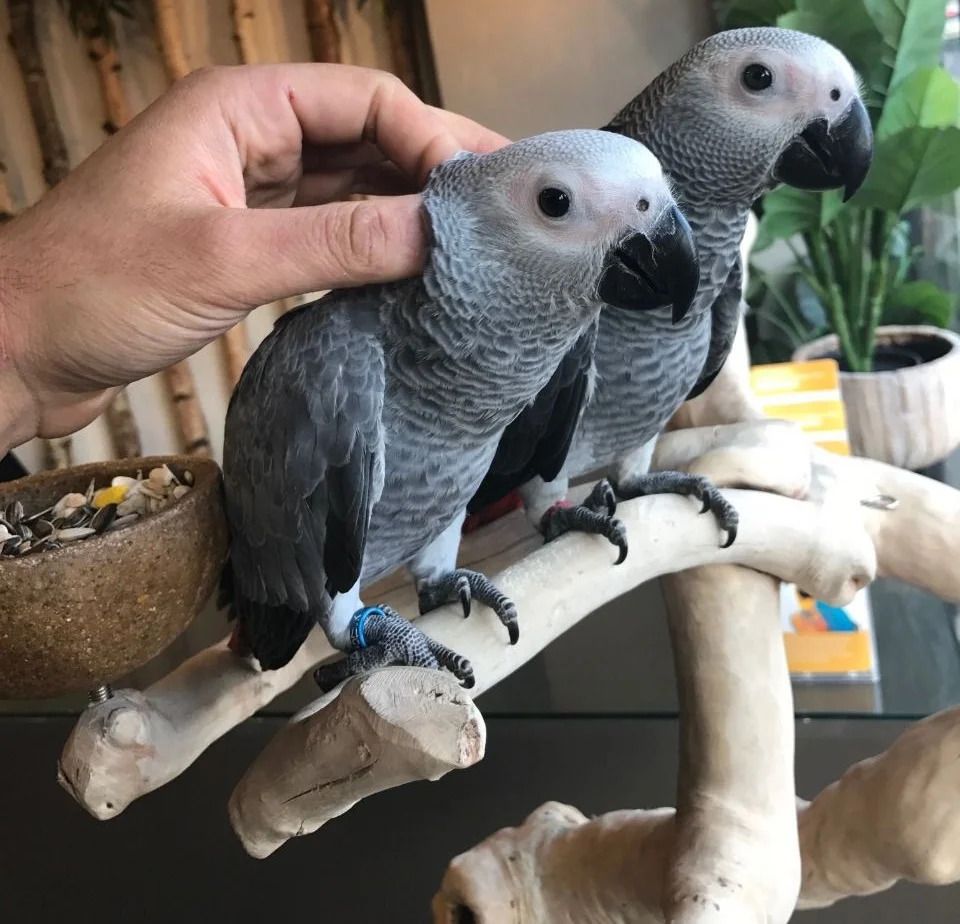Nine Things That Your Parent Taught You About Blue African Grey Parrot
페이지 정보

본문
The Blue African Grey Parrot: A Comprehensive Guide
The Blue African Grey Parrot, a flamboyant and smart species, is one of nature's most captivating avian marvels. Renowned for its striking color, remarkable intellect, and caring disposition, this parrot has won the hearts of bird lovers around the world. This post looks into the various aspects of the Blue African Grey Parrot, covering its attributes, care requirements, and other essential details for potential owners.
1. Attributes of the Blue African Grey Parrot
The Blue african grey parrot care Grey Parrot is a spectacular bird marked by its lively blue plumage, which contrasts dramatically with its gray feathers. The parrot is known for its intelligent and lively nature, making it one of the most sought-after companion birds.
Physical Features
| Function | Description |
|---|---|
| Size | Around 12 to 14 inches in length |
| Weight | Ranges between 400 to 600 grams |
| Life expectancy | Can live for 30-50 years in captivity |
| Coloration | Mostly gray with striking blue accents on the wings and tail |
| Beak | Strong and curved beak |
Behavior and Temperament
- Smart: Blue African Grey Parrots are known for their analytical skills and capability to simulate noises and human speech.
- Social: These birds prosper on interaction and friendship and can become extremely connected to their owners.
- Spirited: They require stimulation and playtime to avoid boredom and develop healthy behaviors.
2. Environment and Diet
Producing a suitable environment and providing the ideal diet plan is essential for the wellness of these amazing birds.
Ideal Habitat
- Cage Size: A large cage with a minimum size of 24 inches large, 24 inches deep, and 36 inches high is advised.
- Ecological Enrichment: Provide toys, sets down, and chances for flying to keep their body and mind engaged.
- Temperature: Maintain a comfortable indoor temperature level between 65 ° F to 80 ° F(18 ° C
to 27 ° C). Diet plan Essentials A balanced
diet plan is vital for the health of the Blue African Grey Parrot. Vital food items consist of:

- High-quality pellets
- Fresh fruits (e.g., apples, bananas, berries)
- Fresh vegetables (e.g., carrots, leafy greens, bell peppers)
- Seeds and nuts in moderation
3. Health Considerations
The health of the Blue African Grey Parrot is critical. Regular veterinary check-ups are vital for early detection and avoidance of health problems.
Common Health Issues
- Respiratory infections
- Plume plucking (often due to tension)
- Obesity due to incorrect diet plan
Indications of Illness
- Decreased cravings
- sleepiness
- Changes in feather condition
- Changes in droppings
4. Training a Blue African Grey Parrot
Training is essential not only for behavioral management however also for strengthening the bond in between the parrot and its owner.
Tips for Effective Training
- Start Early: Early socialization and training cause better-behaved birds.
- Positive Reinforcement: Use deals with and appreciation to motivate good habits.
- Consistency is Key: Establish a regular with commands and training sessions.
Typical Commands to Teach
- Step Up: A foundational command for getting the bird to come to you.
- Come: Encourages the bird to return to its perch or handler.
- No: Important for dissuading undesirable behaviors.
5. Often Asked Questions (FAQs)
1. What is the life-span of a Blue African Grey Parrot?
A well-cared-for Blue congo african grey parrot Grey can live between 30 to 50 years, making them buy a grey parrot long-term dedication.
2. Do Blue African Grey Parrots require a lot of social interaction?
Yes, these parrots are social animals that thrive on interaction. Daily engagement and friendship are vital for their well-being.
3. Can a Blue African Grey Parrot talk?
Absolutely! They are understood for their extraordinary abilities to simulate human speech and other sounds.
4. What are the indications that my Blue African Grey Parrot is unhappy?
Signs of a dissatisfied parrot consist of feather plucking, excessive yelling, aggressiveness, or withdrawal.

5. Is it required to supply a different diet plan?
Yes, a diverse diet plan of pellets, fruits, and vegetables is crucial for their nutritional requirements and overall health.
The Blue African Grey Parrot is a captivating types that provides friendship, intelligence, and joy. However, they need commitment and accountable care to flourish. Understanding their environment, dietary needs, and social requirements allows potential owners to promote a healthy, pleased life for these exceptional birds. With the best dedication and environment, a Blue African Grey can be a valued member of the family for years to come.
- 이전글10 Belgian Shepherd Dog Puppies For Sale Austria That Are Unexpected 25.04.28
- 다음글How Do You Know If You're In The Right Place To Buy A2 Motorcycle Driving License Online 25.04.28
댓글목록
등록된 댓글이 없습니다.
